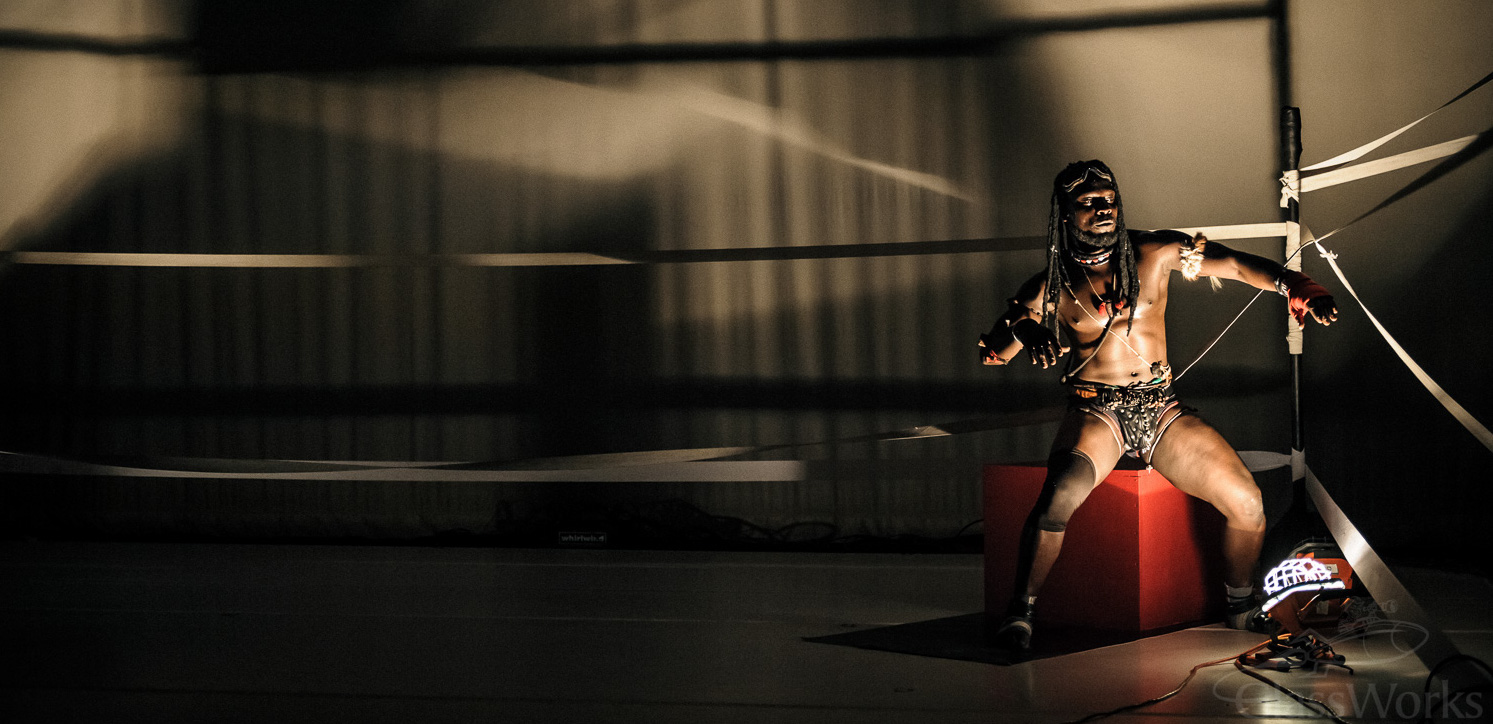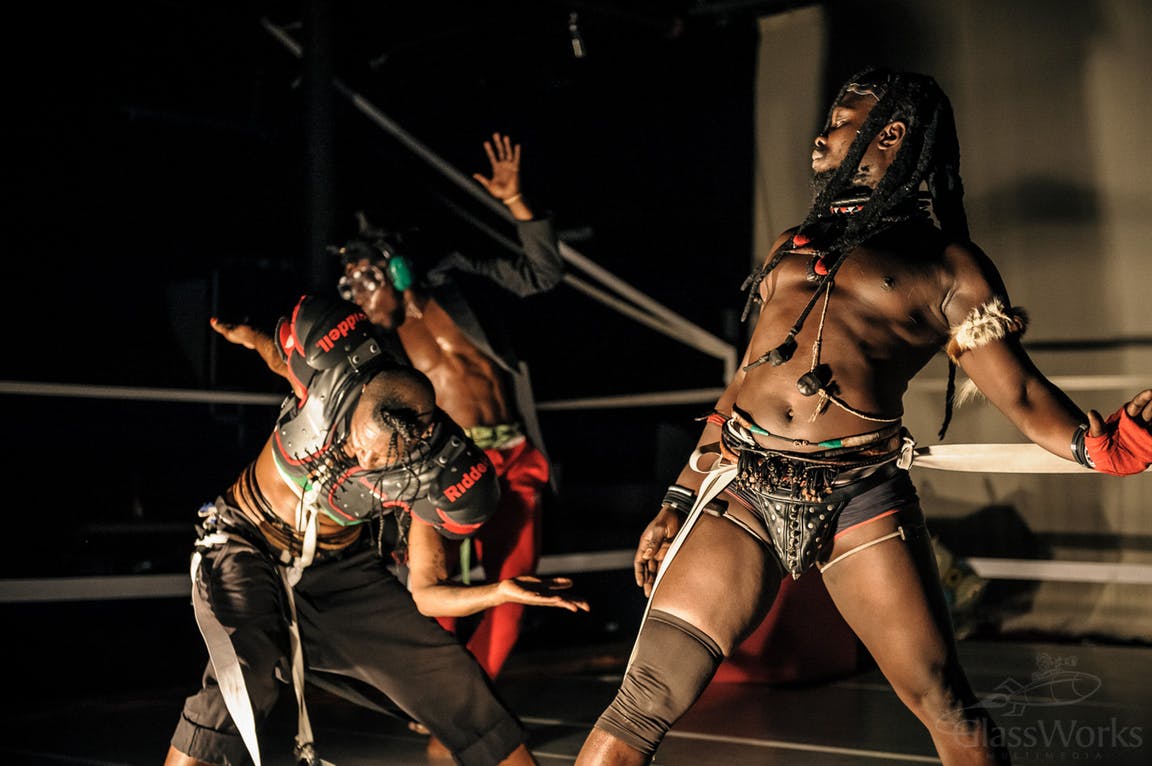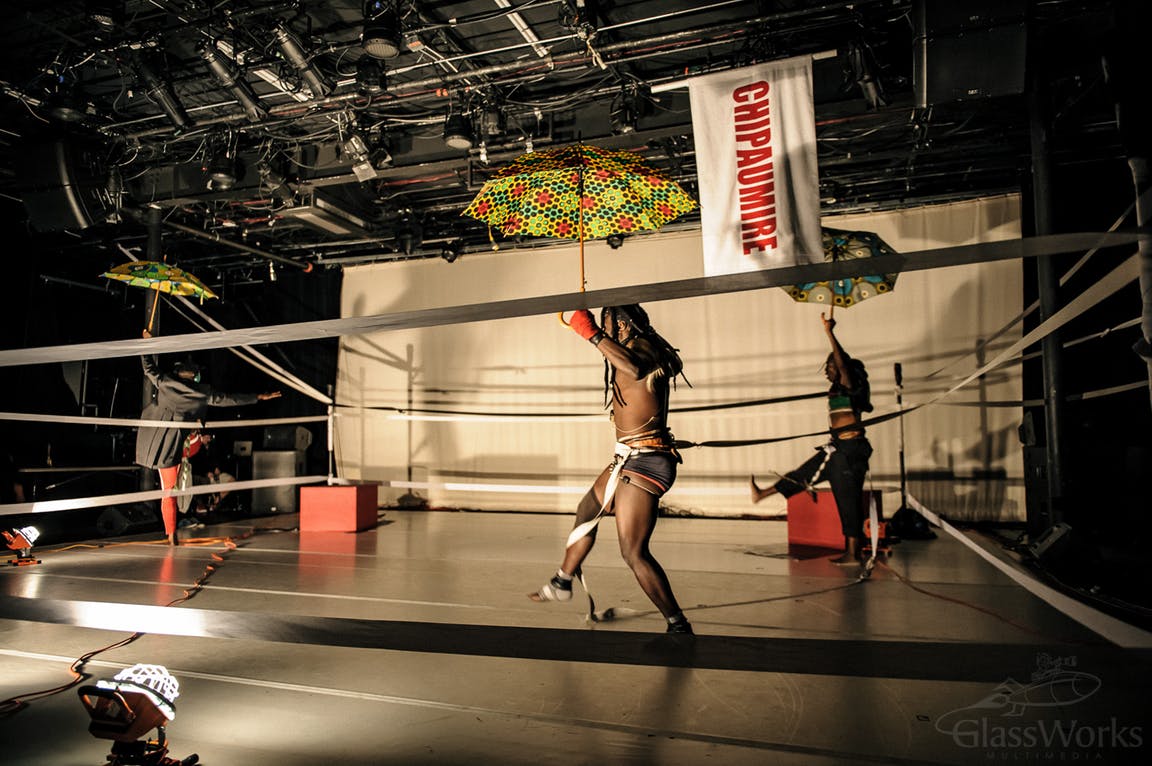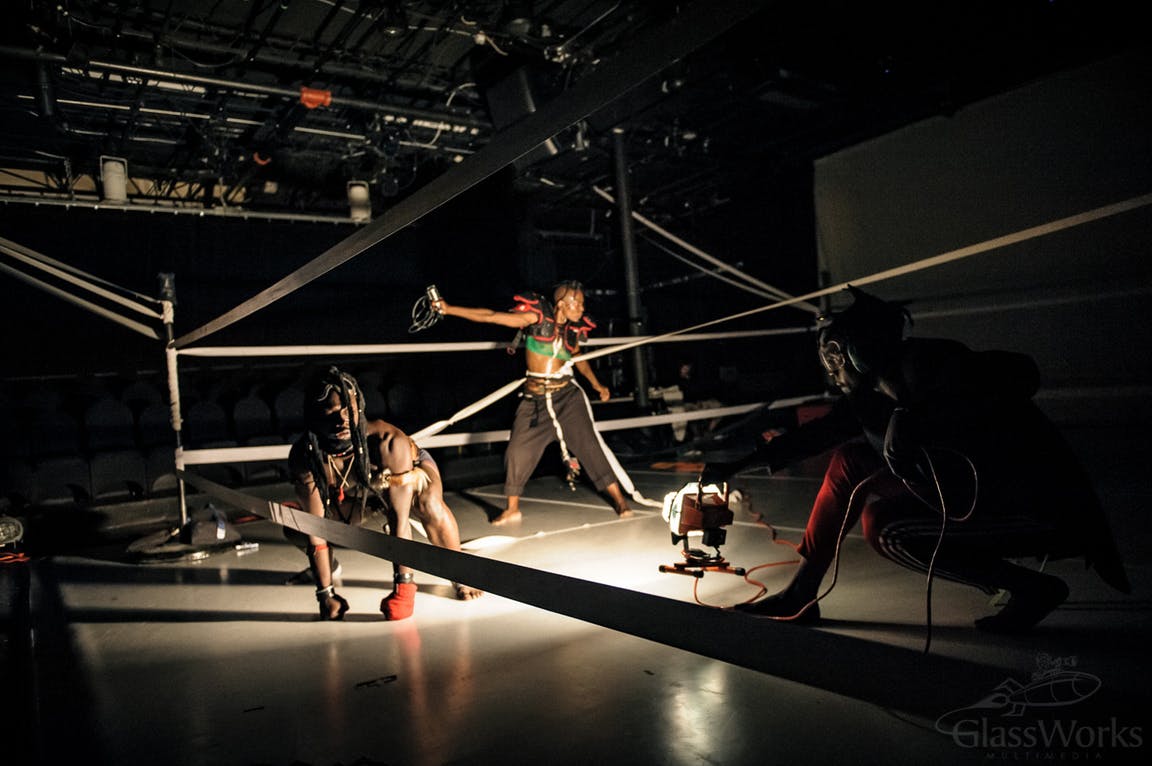
Raw emotion and energy powers ‘Portrait of Myself as My Father’ at Miami Light Project
Bright white spotlights and thumping music accosted the arrivals to “Portrait of Myself as My Father,” Nora Chipaumire’s performance at the Miami Light Project, which Knight Foundation supports. During a performance run earlier this month, the stage was set as a boxing ring, and the atmosphere was intentionally disorienting as audience members took their seats. As the three performers appeared in costume, there was something “Mad Max”-like about the introduction, a theatrical, surreal concoction. We were metaphorically being punched around the ring.
This would not be an easy ride, but the journey turned out to be extraordinary, a dance performance that pressed everyone to question histories and stereotypes, of race and gender, with a dose of humor and irony–and incredible craftsmanship. “Portrait” is the definition of fierce.
For background: Chipaumire was born in Zimbabwe and now lives in Brooklyn–and for most of her life she lost her father (he left the family when she was 5 years old). Her search for her father spawned the concept of the piece, one that resonates throughout colonial societies, in particular in the fate of black males. From Africa to North America to the Caribbean, black men have suffered indignities and subjugation, and have also been “absentee” fathers. Chipaumire started to look for these roots.

“Portrait” begins with a masculine Chipaumire wearing football shoulder pads; she’s the ringmaster. A very muscular Pape Ibrahima Ndiaye is decked out in African dress, with most of his body exposed, and becomes her sparring partner, her slave, her expression of how black men have been exploited and turned into the aggressive “other.” Performer Shamar Watt runs around the ring, and into the audience, egging both viewers and the “boxers” on.
We the observers experience the (deliberately) over-sexualized black man invade our space, and then see him bow to the whip. It’s uncomfortable to say the least, as the music morphs from loud noise music to hip-hop to African rhythms, to eventual silence.
Chipaumire has been working on and off in Miami for several years, in this case in a collaboration between MDC Live Arts and Miami Light Project, but her developmental backyard is vast. Aside from a law degree from the University of Zimbabwe, she has an M.F.A. in choreography from Mills College in Oakland, California, and has studied dance in Africa, Cuba, Jamaica and Japan. She has always mixed an interest in avant-garde dance with the contemporary exploration of African rituals and heritage in her performances. And then her expansive world turned inward.

In 2014, Chipaumire visited the village where her father was born, in 1938, in a former British colony that would later become Zimbabwe. She never knew her father since the split from the family when she was very young, and he died in 1980. What, Chipaumire wondered, was his life like, as he traversed a world as a black African man, through the humiliation of a colonial land, to newly found freedom, to renewed discrimination and anonymity? Her developing theme emerged, entwining histories, traditions and societies: “How do you become a black man?”
That refrain resonates throughout the performance. She verbally asks it over and over, as she moves around the ring in her football gear. The black man becomes the ultimate fighter; he is the champion, the king. But that ring is clearly a reference to a slave auction platform as well. And the powerful Ndiaye is often roped to Chipaumire. At one point she forces Ndiaye–still tied to his master–into the audience to thrust his pelvis at them in a rhythmic sequence. He has become a sexual animal. When she starts asking “what is your name?” the degrading nature of this stage is profoundly disturbing.
It was hard to believe a performance that started on such a crescendo could amp it up any higher, but “Portrait” did. Towards the end, Chipaumire was demanding: “Nigga, you better learn to fight,” and if you can’t you better learn to run, and finally, “nigga are you tired of running?”
There were lighter moments in her monologue, and some truly amazing choreography among the three performers–one could see the influence, for instance, of her time in Japan and Kabuki theater.

But the audience was never really allowed to sit back and simply enjoy the show. If you felt your space was being invaded, that all of your senses–visual, aural, emotional–were being pushed to the limit, that was part of the performance.
When the music stopped and the lights dimmed, Chipaumire was left crouching in the ring, holding Ndiaye on her shoulders. “I carry the carcass of my father,” she intoned. It was a poignant finale, as she became feminine, the daughter with her lost father. But it wasn’t a heavy burden. She may not have saved the man she repeatedly named towards the end–Webster Barnabas Chipaumire–but she brought back to life the African male that he may have been on stage, giving him boxing gloves and a fighting chance. With this remarkable performance, she was also able to carry us all across new boundaries.
Anne Tschida is a freelance arts critic and writer. Email her at [email protected].
Recent Content
-
Artsarticle ·
-
Artsarticle ·
-
Artsarticle ·

